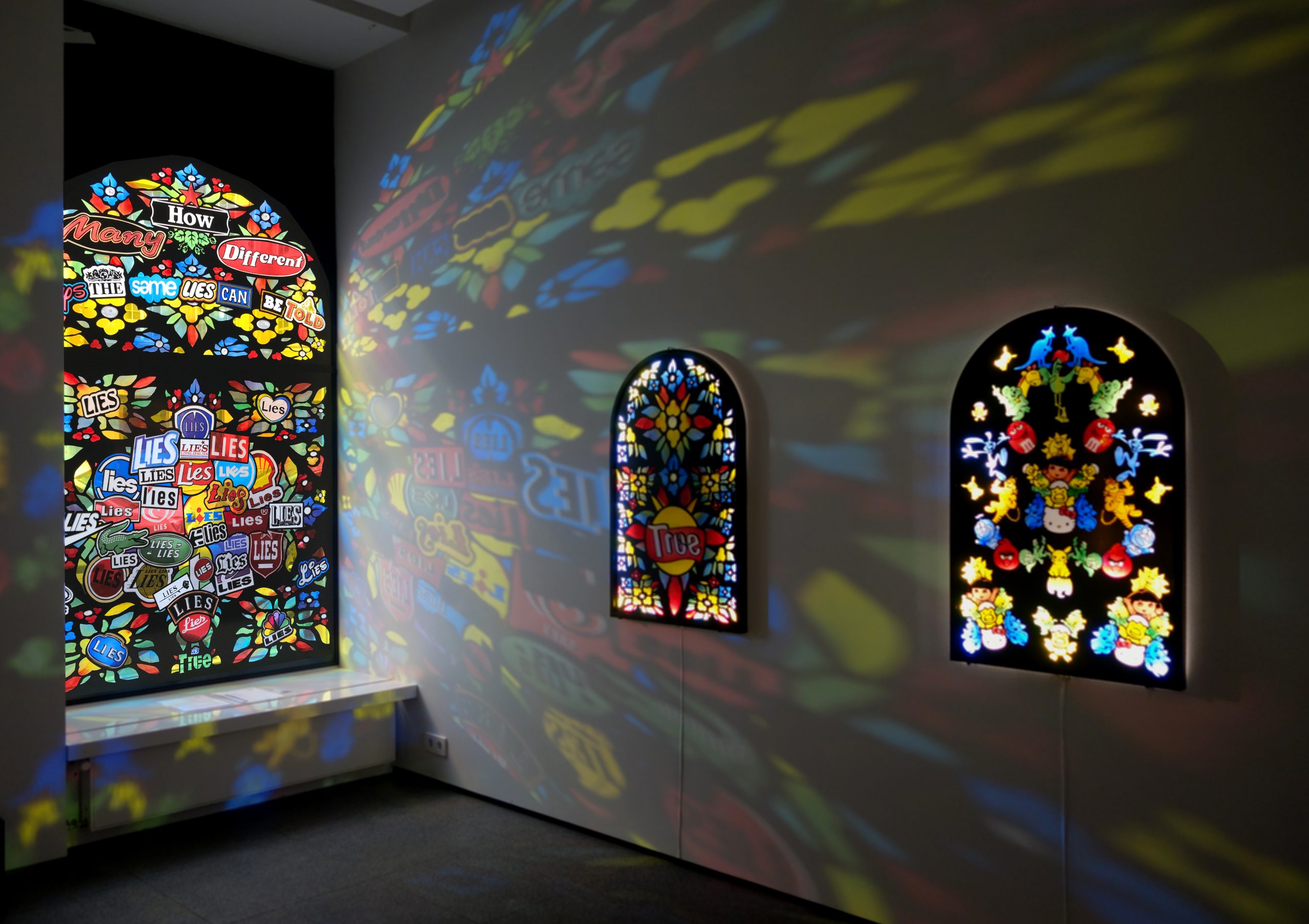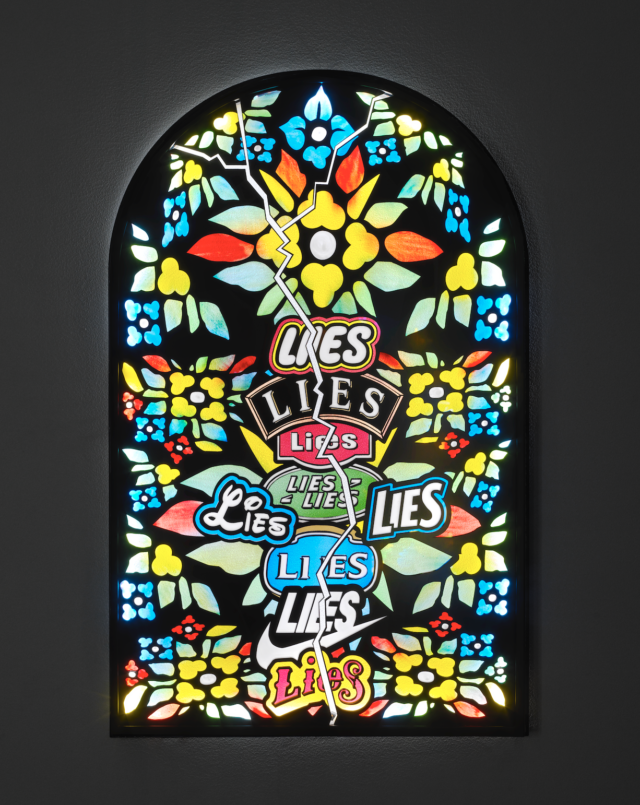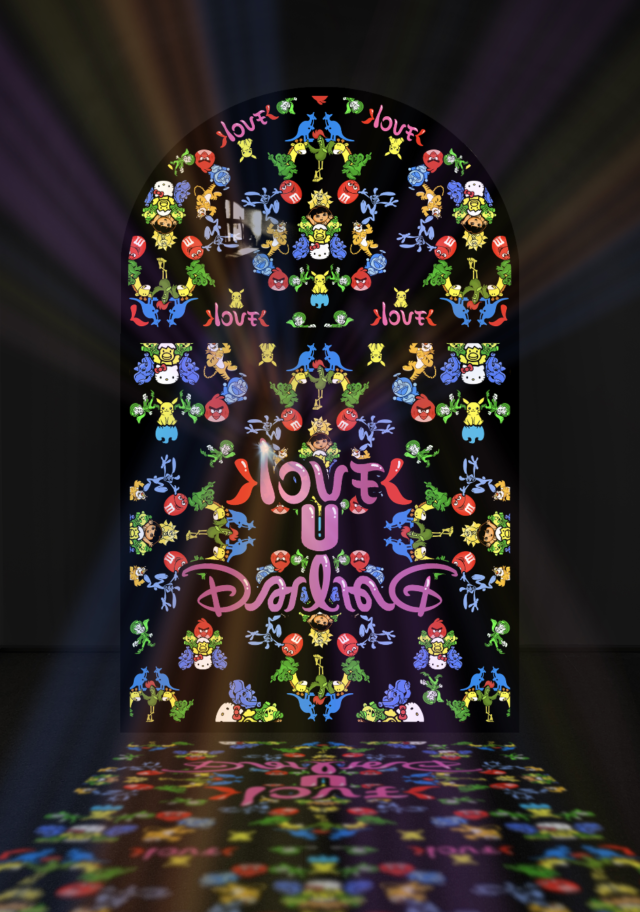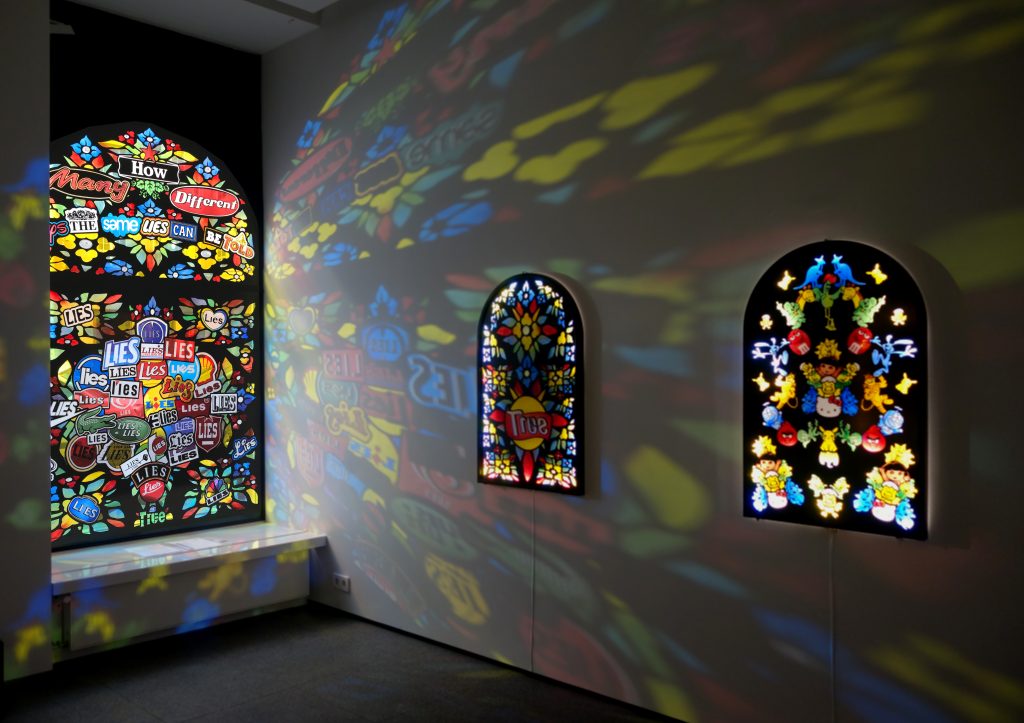Zetterberg Gallery is proud to present Jani Leinonen’s long-awaited stained glass works for the first time in Finland. With the exhibition Lies, Lies, Lies, Leinonen transforms the gallery into a shrine of light, color, and reflection.
Nothing but the Untruth // Jani Leinonen
Stepping inside Lies is a mystical experience. With dim lighting, dancing rays of light and reflections, it has the look and feel of a place of worship. Stained glass, a tradition firmly rooted in Christianity in the European context, is the dominant feature. Christian churches are not exactly reputed for their honesty, but Leinonen’s focus is not on the lies of the Church as such. According to the artist, European culture is rooted in Christianity, and that culture has a long history of deceit. Our post-truth era problems are firmly grounded on this history. Inside this little sanctuary, the artist is preaching us to think critically. Perhaps an oxymoron, perhaps on purpose.
On a closer look, the works combine ancient religious iconography with the styles and shapes of contemporary advertising. The artist harnesses the millennia-old methods of stained glass and mosaic for the purposes of today. It is no wonder the impression is holy, for the delicate craftsmanship of these works has been produced inside the walls of Franz Mayer of Munich, Inc. A rare surviving institution of European craftmanship that also produces stained glass work for the Vatican.
The title piece of the exhibition, a herd of corporate and institutional logos where names have been replaced with lies adorn what appears to be a large stained-glass window with colourful medieval ornaments. A question formed of more logos floats on top of it all: How Many Different Ways the Same Lies Can Be Told?
True to his affection for the popular, Leinonen has borrowed this sentence from a source no more noble than the first of Donna Leon’s highly successful crime novels set in Venice, Death at La Fenice (1992). In it, commisario Guido Brunetti enquires about his wife Paola’s habit of reading a different newspaper each morning without any loyalties to a set political leaning or even a language. It is part of Paola’s answer that we see reflected on glass here: “I want to see how many different ways the same lies can be told”.
Leinonen takes this question seriously. “Despite utopian forecasts about the democratization of information and power, not much has changed for the better. Governments, political parties and corporations in power still control information and disinformation. Politics, media and other institutions of power are all complicit in the crisis of democracy we are currently facing.”
As if to keep up with the times of information overflow, the works are an overflow of colour, light and mixed messages. Yet, a type of unexpected harmony emerges out of all this. Lies is an eclectic space for reflection.
Text by Carmen Baltzar



